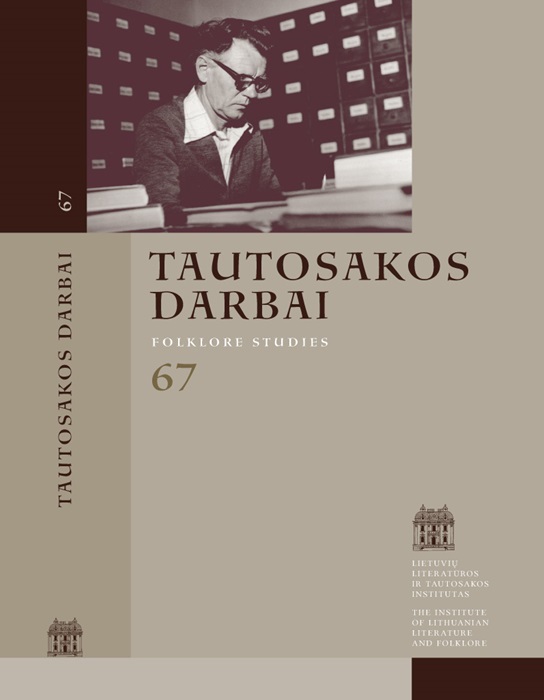The Image of Geese in Lithuanian Phraseology
Abstract
The article focuses on the image of geese in Lithuanian phraseology, attempting to define its peculiarities and possible connections with other phenomena of the traditional culture. The research material consists of Lithuanian phraseologisms picked out from the lexicographical sources and mentioning either goose, gander, or gosling. Analysis of these phraseologisms reveals that the main peculiarities of the image are related to appearance, character, and behavior of the birds, as well as to the actions performed with them. Phraseologisms emphasize the webbed feet of the geese, their neck, blue gizzard, enlarged reproductive organs, or scabrous skin when deplumed. Geese are depicted as noisy, greedy, oat-eating birds, they waddle in a line, following each other. Their image is not without controversies: they can get wet, but their feathers do not get drenched through. In phraseology, geese are mainly characterized as angry and stupid. The depiction of geese-tending conveys significant cultural information related to the notion of the afterlife, as well as entertainment and economic activities. In general, the image of geese in Lithuanian phraseology is ascribed a negative connotation.

This work is licensed under a Creative Commons Attribution 4.0 International License.
Downloads
Most read articles in this journal
- Marjeta Pisk, Language Switching in (Folk) Songs along the Slovenian-Italian Border , Tautosakos darbai: Vol. 60 (2020)
- Martha María López Ramos, Gilles Aniorte Tomassian, Mario López, Songwriting: a Means to Prevent Gender Violence , Tautosakos darbai: Vol. 59 (2020)
- Vita Džekčioriūtė, Intimidating, Cruel and Violent Motives of the Traditional Lithuanian Lullabies , Tautosakos darbai: Vol. 65 (2023): Tautosakos darbai
- Jūratė Levina, Unpublished Review by Greimas on the Lithuanian Folklore Collection by Jonas Balys , Tautosakos darbai: Vol. 54 (2017)
- Татьяна Владимировна Цивьян, Мифологические биографии по Греймасу , Tautosakos darbai: Vol. 54 (2017)
- Marius Ščavinskas, Vernacular Image of the Devil in the Medieval Writings from the 13th Century and the Lithuanian Folklore: Similarities and Differences , Tautosakos darbai: Vol. 67 (2024): Tautosakos darbai
- Susanne Österlund-Pötzsch, Lithuanian Folklore in Changing Cultural and Social Contexts , Tautosakos darbai: Vol. 61 (2021)
- Margarita Matulytė, A Little Kingdom. Local Exposures of the Interwar Lithuania (a Case Study) , Tautosakos darbai: Vol. 53 (2017)
- Toma Grašytė, Traditional Musician in the Nowadays Lithuanian Village or Small Town’s Community , Tautosakos darbai: Vol. 52 (2016)
- Bronė Stundžienė, From the Soviet Folksong Research: Between Free Choice and Obligation , Tautosakos darbai: Vol. 65 (2023): Tautosakos darbai




